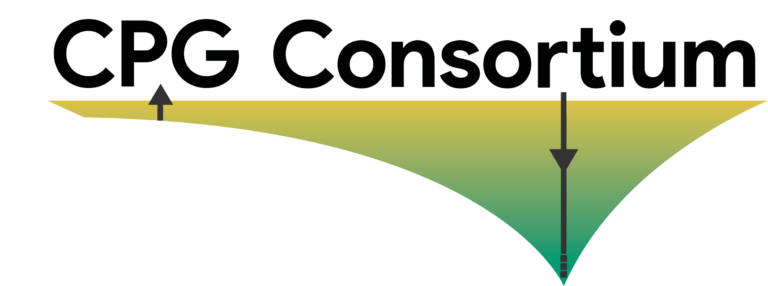
Mailing Address
Batmagnai Erdenechimeg
Geothermal Energy & Geofluids
Institute of Geophysics
NO F 61
Sonneggstrasse 5
CH-8092 Zurich Switzerland
Contact
| Phone | +41 44 632 4710 |
| erdenechimeg(at)ethz.ch |
Administration
| Dominique Ballarin Dolfin | |
| Phone | +41 44 632 3465 |
| ballarin(at)ethz.ch | |
Publications
[Go to Proceedings Refereed] [Go to Proceedings Non-Refereed] [Go to Theses]
Underlined names are links to current or past GEG members
REFEREED PUBLICATIONS IN JOURNALS
6.
Comeau, J., M. Becken, A. Kuvshinov, D. Sodnomsambuu, B. Erdenechimeg, and Ts. Shoovdor, The Bayankhongor Metal Belt (Mongolia): Constraints on
Crustal Architecture and Implications for Mineral
Emplacement from 3-D Electrical Resistivity Models, MDPI, 6/32, 2021. https://doi.org/10.3390/iecms2021-09360 [Download] [View Abstract]he Bayankhongor Metal Belt, a metallogenic belt that extends for more than 100 km in
central Mongolia, is an economically significant zone that includes sources of gold and copper.
Unfortunately, the crustal architecture is poorly understood throughout this region. However,
it is known that the crustal structure strongly influences the development and emplacement
of mineral zones. Electrical resistivity is a key physical parameter for mineral exploration
that can help to locate mineral zones and determine the regional crustal structure. We use natural source magnetotelluric data to generate three-dimensional electrical resistivity models of the
crust. The results show that anomalous, low-resistivity zones in the upper crust are spatially
associated with the surface expressions of known mineral occurrences, deposits, and mining
projects. We thus infer that the development of the mineralization is closely linked to the low-resistivity signatures and, therefore, to crustal structures, due primarily to their influence on fluid
flow. The low-resistivity signatures are possibly related to associated sulfide mineralogy within
the host complex and to structures and weaknesses that facilitated fluid movement and
contain traces of past hydrothermal alteration. Thus, the crustal architecture, including major
crustal boundaries that influence fluid distribution, exerts a first-order control on the location of
the metallogenic belt. By combining our electrical resistivity results with other geological and
petrological data, we attempt to gain insights into the emplacement and origin of mineral resources.
5.
Comeau, J., M. Becken, A. Kuvshinov, V. Grayver, J. Kaufl, B. Erdenechimeg, Ts. Shoovdor, and D. Sodnomsambuu, An Asthenospheric Upwelling Beneath Central
Mongolia — Implications for Intraplate Surface
Uplift and Volcanism , Acta Geologica Sinica, 95, pp. 70-72, 2021. [View Abstract]Intraplate processes, such as continental surface uplift
and intraplate volcanism, are enigmatic and the underlying
mechanisms responsible are not fully understood. Central
Mongolia is an ideal natural laboratory for studying such
processes because of its location in the continental interior
far from tectonic plate boundaries, its high-elevation
plateau, and its widespread, low-volume, basaltic
volcanism. The processes responsible for developing this
region remain largely unexplained — due in part to a lack
of high-resolution geophysical studies — and thus are
open questions.
A recent project undertaken to map the crust and upper
mantle structure of central Mongolia has collected a large
magnetotelluric array (~700 km ~450 km) (Käufl et al.,
2020; see also Comeau et al., 2018a) (data described in
Becken et al., 2021a, b). In addition, other groups have
deployed networks of seismic recorders across the region
(e.g., Zhang et al., 2017; Meltzer et al., 2019), creating a
valuable opportunity for joint interpretation and analysis.
These new datasets add to a rich collection of geological
and geochemical information across Mongolia (e.g., Barry
et al., 2003, and references therein), including recent
thermobarometry, geochronology, and petrological
analysis of surface lavas and xenoliths (e.g., Ancuta et al.,
2018; Sheldrick et al., 2020).
For its part, modern thermo-mechanical numerical
modeling can provide insights by simulating the temporal
evolution of dynamic tectonic processes, offering an
opportunity to test various explanations. To better
understand the evolution of the lithosphere, multidisciplinary results can be integrated into the geodynamic
modeling. The simulation model can be evaluated against
the available observational evidence and physically
plausible mechanisms can be explored as potential
explanations for intraplate surface uplift.
4.
Kaufl, S., V. Grayver, J. Comeau, V. Kuvshinov, M. Becken, J. Kamm, B. Erdenechimeg, and D. Sodnomsambuu, Magnetotelluric multiscale 3-D inversion reveals crustal and upper mantle structure beneath the Hangai and Gobi-Altai region in Mongolia, Geophysical Journal International, 221/1002-1028, 2020. https://doi.org/https://doi.org/10.1093/gji/ggaa039 [Download] [View Abstract]Central Mongolia is a prominent region of intracontinental surface deformation and intraplate volcanism. To study these processes, which are poorly understood, we collected magnetotelluric (MT) data in the Hangai and Gobi-Altai region in central Mongolia and derived the first 3-D resistivity model of the crustal and upper mantle structure in this region. The geological and tectonic history of this region is complex, resulting in features over a wide range of spatial scales, which that are coupled through a variety of geodynamic processes. Many Earth properties that are critical for the understanding of these processes, such as temperature as well as fluid and melt properties, affect the electrical conductivity in the subsurface. 3-D imaging using MT can resolve the distribution of electrical conductivity within the Earth at scales ranging from tens of metres to hundreds of kilometres, thereby providing constraints on possible geodynamic scenarios. We present an approach to survey design, data acquisition, and inversion that aims to bridge various spatial scales while keeping the required field work and computational cost of the subsequent 3-D inversion feasible. MT transfer functions were estimated for a 650 × 400 km2 grid, which included measurements on an array with regular 50 × 50 km2 spacing and along several profiles with a denser 5–15 km spacing. The use of telluric-only data loggers on these profiles allowed for an efficient data acquisition with a high spatial resolution. A 3-D finite element forward modelling and inversion code was used to obtain the resistivity model. Locally refined unstructured hexahedral meshes allow for a multiscale model parametrization and accurate topography representation. The inversion process was carried out over four stages, whereby the result from each stage was used as input for the following stage that included a finer model parametrization and/or additional data (i.e. more stations, wider frequency range). The final model reveals a detailed resistivity structure and fits the observed data well, across all periods and site locations, offering new insights into the subsurface structure of central Mongolia. A prominent feature is a large low-resistivity zone detected in the upper mantle. This feature suggests a non-uniform lithosphere-asthenosphere boundary that contains localized upwellings that shallow to a depth of 70 km, consistent with previous studies. The 3-D model reveals the complex geometry of the feature, which appears rooted below the Eastern Hangai Dome with a second smaller feature slightly south of the Hangai Dome. Within the highly resistive upper crust, several conductive anomalies are observed. These may be explained by late Cenozoic volcanic zones and modern geothermal areas, which appear linked to mantle structures, as well as by major fault systems, which mark terrane boundaries and mineralized zones. Well resolved, heterogeneous low-resistivity zones that permeate the lower crust may be explained by fluid-rich domains.
3.
Comeau, J., M. Becken, S. Kaufl, V. Grayver, V. Kuvshinov, Ts. Shoovdor, B. Erdenechimeg, and D. Sodnomsambuu, Evidence for terrane boundaries and suture zones across Southern Mongolia detected with a 2-dimensional magnetotelluric transect, Earth, Planets and Space, 72/1--13, pp. 1-13, 2020. https://doi.org/https://doi.org/10.1016/j.epsl.2018.02.007 [Download] [View Abstract]Southern Mongolia is part of the Central Asian Orogenic Belt, the origin and evolution of which is not fully known and is often debated. It is composed of several east–west trending lithostratigraphic domains that are attributed to an assemblage of accreted terranes or tectonic zones. This is in contrast to Central Mongolia, which is dominated by a cratonic block in the Hangai region. Terranes are typically bounded by suture zones that are expected to be deep-reaching, but may be difficult to identify based on observable surface fault traces alone. Thus, attempts to match lithostratigraphic domains to surface faulting have revealed some disagreements in the positions of suspected terranes. Furthermore, the subsurface structure of this region remains relatively unknown. Therefore, high-resolution geophysical data are required to determine the locations of terrane boundaries. Magnetotelluric data and telluric-only data were acquired across Southern Mongolia on a profile along a longitude of approximately 100.5° E. The profile extends ~ 350 km from the Hangai Mountains, across the Gobi–Altai Mountains, to the China–Mongolia border. The data were used to generate an electrical resistivity model of the crust and upper mantle, presented here, that can contribute to the understanding of the structure of this region, and of the evolution of the Central Asian Orogenic Belt. The resistivity model shows a generally resistive upper crust (0–20 km) with several anomalously conductive features that are believed to indicate suture zones and the boundaries of tectonic zones. Moreover, their spatial distribution is coincident with known surface fault segments and active seismicity. The lower crust (30–45 km) becomes generally less resistive, but contains an anomalously conductive feature below the Gobi–Altai zone. This potentially agrees with studies that have argued for an allochthonous lower crust below this region that has been relaminated and metamorphosed. Furthermore, there is a large contrast in the electrical properties between identified tectonic zones, due to their unique tectonic histories. Although penetration to greater depths is limited, the magnetotelluric data indicate a thick lithosphere below Southern Mongolia, in contrast to the previously reported thin lithosphere below Central Mongolia.
2.
Erdenechimeg, B., Ts. Battuulai, N. Tumen, G. Sukhbaatar, and E. Bold, A pilot geomagnetic and magnetotelluric survey in Mogod area of the
Eastern Hangai, Mongolia, Proceedings of the Mongolian Academy of Sciences, 59/02, pp. 71-81, 2019. https://doi.org/10.5564/pmas.v59i2.1220 [Download] [View Abstract] The paper are the preliminary results of the study of the hydrothermal system of Khulj, which is
located in Mogod soum of Bulgan aimag, carried out using magnetotelluric and magnetic methods. Khulj’s
hydrothermal system is an interesting geodynamic structure located in the area of a young volcanic mountain
in the eastern part of the Khangai Mountains. The study was carried out using two geophysical methods.
The first is the magnetotelluric measurement, which registered variations of 3 components of magnetic
field (Bx, By, Bz), and 2 components of electric field (Ex, Ey). In addition, we have provided a total of 8
magnetic field profiles for an area of 4 x 8 km. The sample rate of the total magnetic field was 3 seconds,
which corresponds to about 3 meters. The programme’s codes are written in C ++ and Matlab and the result
of this code is a programme called INV2DMAG. This programme is based on the inversion method of the
Levenberq-Marquardt algorithm. Magnetotelluric results show that one-dimensional models clearly display
the depth, the thickness of precipitation, as well as the thickness of the Moho boundaries. A preliminary
two-dimensional magnetic structure, determined from small-length profiles, provides very useful insight into
understanding the shallow deep structure of the sedimentary soil of the region in and around Mogod. In the
Mogod’s hydrothermal system, we expect that the hot fluid heats up from granites, which have a deep source.
For a detailed research, repeat field measurement is required to determine not only the structure of this
geothermal system but also to determine the depth of the sedimentary soil.
1.
Comeau, M.J., J.S. Kaufl, M. Becken, A. Kuvshinov, A.V. Grayver, J. Kamm, B. Erdenechimeg, and S. Demberel, Evidence for fluid and melt generation in response to an asthenospheric upwelling beneath the Hangai Dome, Mongolia, Earth and Planetary Science Letters, 487, pp. 201-209, 2018. https://doi.org/10.1016/j.epsl.2018.02.007 [Download] [View Abstract]The Hangai Dome, Mongolia, is an unusual high-elevation, intra-continental plateau characterized by dispersed, low-volume, intraplate volcanism. Its subsurface structure and its origin remains unexplained, due in part to a lack of high-resolution geophysical data. Magnetotelluric data along a ∼610 km profile crossing the Hangai Dome were used to generate electrical resistivity models of the crust and upper mantle. The crust is found to be unexpectedly heterogeneous. The upper crust is highly resistive but contains several features interpreted as ancient fluid pathways and fault zones, including the South Hangai fault system and ophiolite belt that is revealed to be a major crustal boundary. South of the Hangai Dome a clear transition in crustal properties is observed which reflects the rheological differences across accreted terranes. The lower crust contains discrete zones of low-resistivity material that indicate the presence of fluids and a weakened lower crust. The upper mantle contains a large low-resistivity zone that is consistent with the presence of partial melt within an asthenospheric upwelling, believed to be driving intraplate volcanism and supporting uplift.
[back to Top of Page]
PROCEEDINGS REFEREED
2.
Erdenechimeg, B., Deep-rooted geothermal system imaged by magnetotelluric surveys under the Tsenkher hot
spring area, Mongolian Hangai, Proceedings World Geothermal Congress 2020+1, 2021. [View Abstract]Tsetserleg city is located in the eastern part of Hangai dome. During the winter, the city is heavily affected by air pollution due to the
burning of coal. Using geothermal resources in the region, manifested by the presence of hot springs in the region, could dramatically
reduce air pollution. To understand the nature of the geothermal reservoir feeding the hot springs, we conducted magnetotelluric
surveys in the Tsenkher hot spring region south of Tsetserleg in 2019 and 2020.
To obtain a subsurface electrical conductivity model of the hot spring area with magnetotellurics (MT), we inverted data collected in
2019 and 2020 at 126 MT sites, from a total of 306 sites, obtained in the Tsenkher geothermal area. For 3-D modelling and inversion
of the MT data we used the high order finite element code GoFEM (Grayver, 2015). Locally refined unstructured meshes are used to
ensure numerical accuracy with a sufficiently fine discretization of the inversion domain, while keeping the computational cost
feasible. To recover a 3-D electrical conductivity model, we invert the full impedance tensor rotated into geoelectric strike direction.
The best fitting model provides important new insights into the subsurface structure of the Tsenkher geothermal region. The model
is characterized by a prominent crustal conductor that appears under the hot spring areas and rises from depths of more than 10 km
to the surface. We interpret the conductor as being related to local volcanism and as a zone rich in partial melt and magma-derived
fluids, serving as the heat source feeding the hot springs.
1.
Dorj, P., F. Samrock, and B. Erdenechimeg, Update of Geothermal Development of Mongolia, Proceedings World Geothermal Congress, 2020. [View Abstract]A first large scale detailed geophysical exploration work in Arkhangai province (a largest geothermal active zone) is done between 2019 and 2020. Based on the result of this geophysical exploration work a combined geothermal district heating and power production plant will be built in Arkhangai province in the coming few years. Ground source heat pump application is broadly introduced in the country using ground water and soil heating system.


